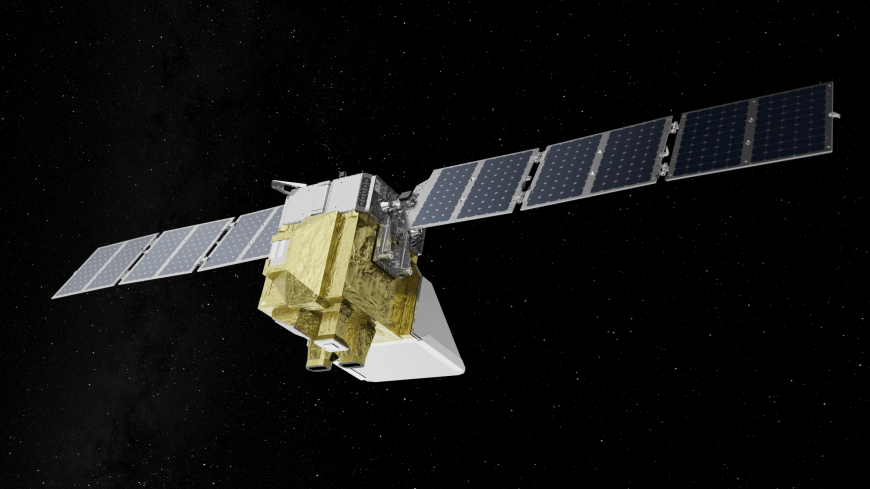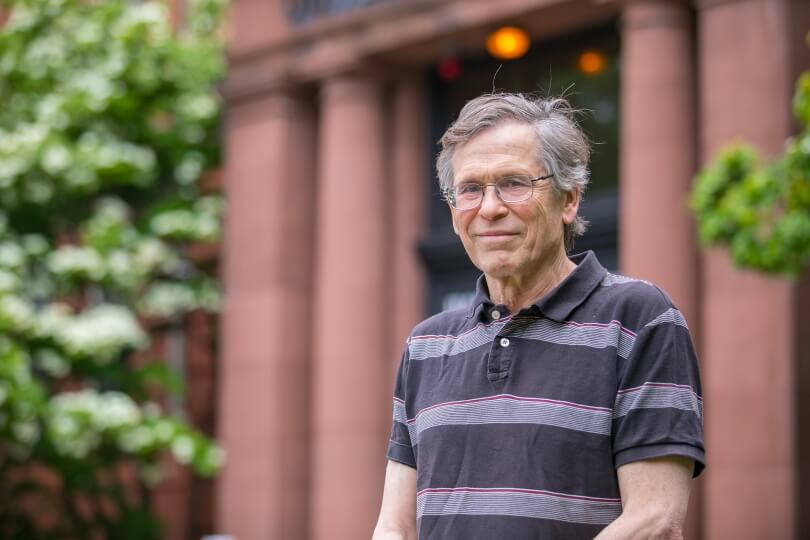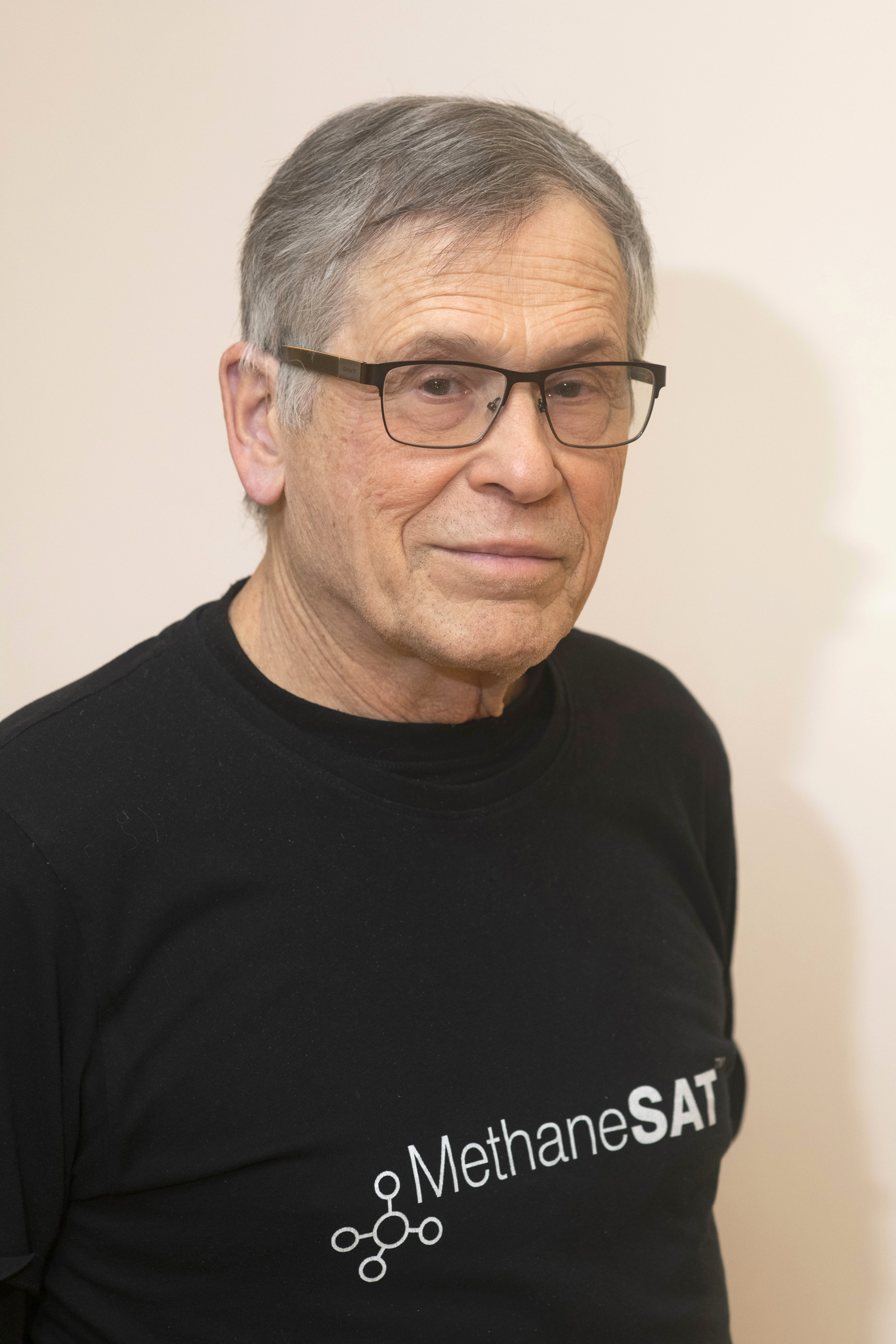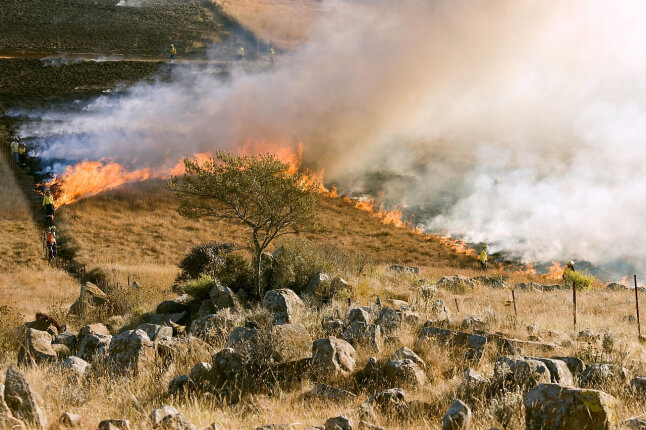News
After more than seven years of development, MethaneSAT recently launched from Vandenberg Space Force Base in California. A collaboration between the Harvard John A. Paulson School of Engineering and Applied Sciences, Harvard-Smithsonian Center for Astrophysics, the Environmental Defense Fund and other partners, MethaneSAT will be capable of spotting methane emissions from space, producing data from high-resolution images that can cover hundreds of square kilometers at a time.
The imaging technology and data algorithms for the satellite were developed in the lab of Steven Wofsy, Abbott Lawrence Rotch Professor of Atmospheric and Environmental Science at SEAS. Wofsy recently spoke with the Salata Institute for Climate and Sustainability about MethaneSAT’s origins and potential impact.
A model of MethaneSAT, which recently launched from Vandenberg Space Force Base in California (MethaneSAT)
What is methane, and why should people care about it?
Methane is a major component of natural gas as well as fossil fuel systems and is considered to be the second-most-important greenhouse gas that’s affected by human beings. It is important for fighting climate change because it accounts for about a third of the current warming of the atmosphere. It also has a shorter lifetime in the atmosphere than CO2, so therefore if we reduce methane emissions, we’ll see the results more quickly. CO2 has about a 100-year lifetime, whereas methane has a 10-year lifetime.
How can MethaneSAT help track and mitigate methane emissions?
MethaneSAT can make an image of methane concentrations with fine resolution and can see those small, fine details over a very large area of about 250 kilometers by 300-400 kilometers. When we look down on the earth with an imaging satellite like this, we can see the pattern of methane anomalies that arise when you have emissions of methane into the atmosphere. When we’re looking at oil and gas operations, oil and gas fields where methane is part of the natural gas being extracted, where there are leaks, where there’s venting, where methane is being released into the atmosphere in any way, we can see that with very high detail and resolution. Our high-level goal is to provide information that actually incentivizes people to go and reduce those emissions into the atmosphere. We have a goal that involves socially useful data.
Who can use this data?
The data from MethaneSAT will be processed to create products such as images and summary tables that can be used by lawyers, scientists and regulators to create an environment where actions to reduce emissions will be effective. We’ll have a data portal that will display the results in different ways, and you’ll also be able to download the data for free.
Steven Wofsy, Abbott Lawrence Rotch Professor of Atmospheric and Environmental Science at SEAS (Eliza Grinnell/SEAS)
How did you get involved in MethaneSAT
In 2015, I got a call from a friend of mine, Robert Harris, who’d studied methane for much of his career and at that time he was working for Steve Hamburg, who was the chief scientist at the Environmental Defense Fund (EDF). The Environmental Defense Fund had just finished an incredible two- or three-year program, about $20 million, to answer the question of how much methane is being emitted from the oil and gas value chain. They did this in the traditional way: sending people to sites, making measurements from airplanes flying around and sniffing the air. They found a good deal more methane is being emitted from these oil and gas production areas than had been reported to the EPA, or people even knew about. Robert wanted to make it into a global program that could have an impact and incentivize people to reduce emissions. He called me because he knew I knew spectroscopy and the basic physics we’d need to do this. So I called my friend Kelly Chance up at the Center for Astrophysics, who’d just received an award for his work with the Tropospheric Emissions: Monitoring of Pollution satellite at the Smithsonian Astronomical Observatory. We then did a study funded partly by Harvard, partly by the Smithsonian, and partly by EDF, that asked the question of could we build a satellite, and how much would it cost.
What are your personal feelings on seeing this satellite finally launch?
I’m 77 years old, and I seriously would’ve considered retiring if this project weren’t happening. I’m very excited about it, but it’s also a pretty intense time. Hopefully it’ll be successful, and we’ll produce something that helps to make the world a better place.
Topics: Climate, Environmental Science & Engineering, Technology
Cutting-edge science delivered direct to your inbox.
Join the Harvard SEAS mailing list.
Scientist Profiles
Steven C. Wofsy
Abbott Lawrence Rotch Professor of Atmospheric and Environmental Science
Press Contact
Matt Goisman | mgoisman@g.harvard.edu





